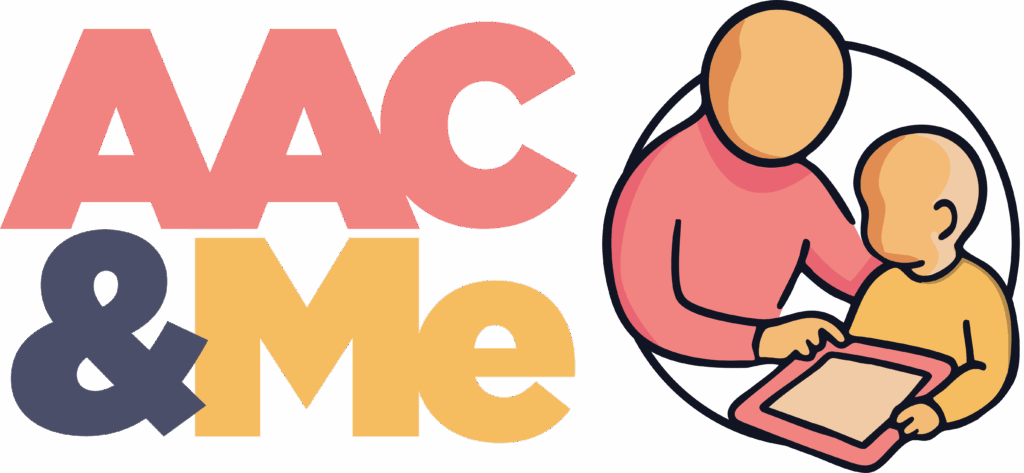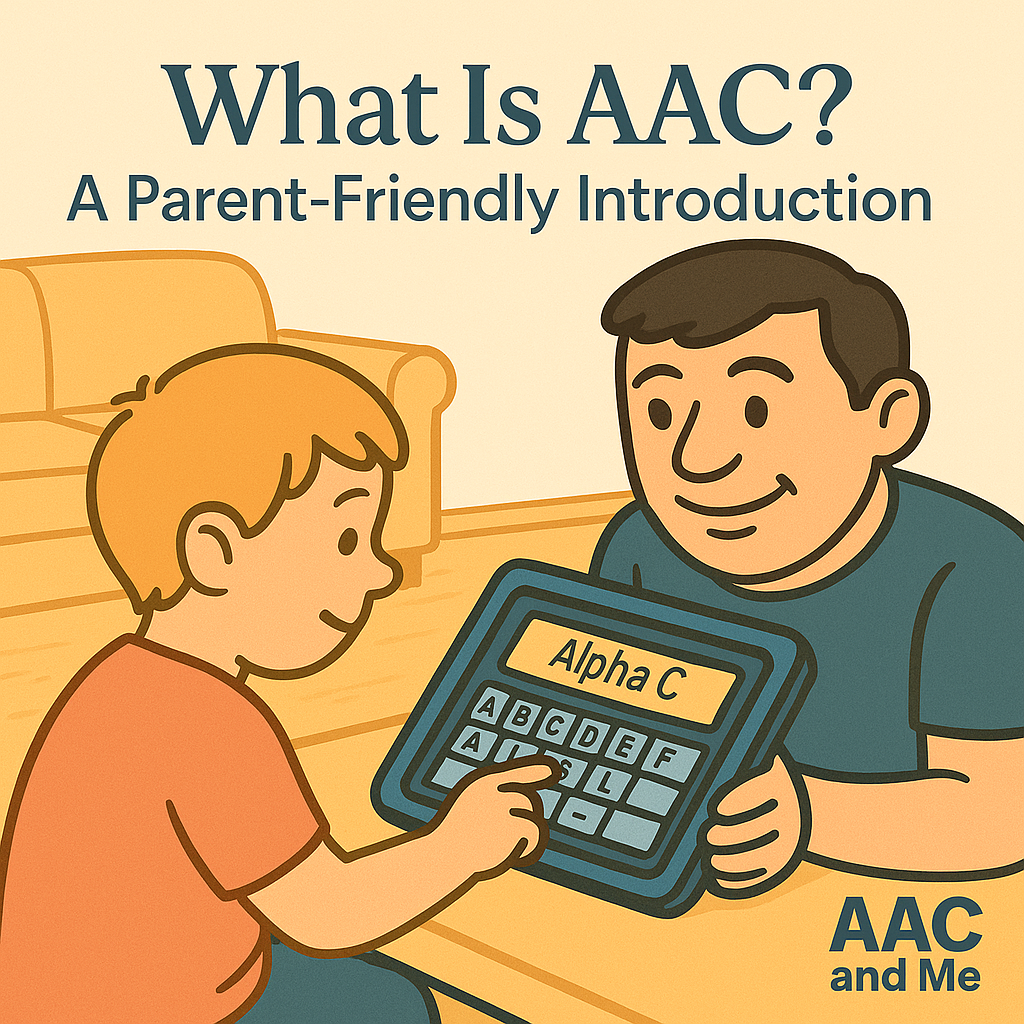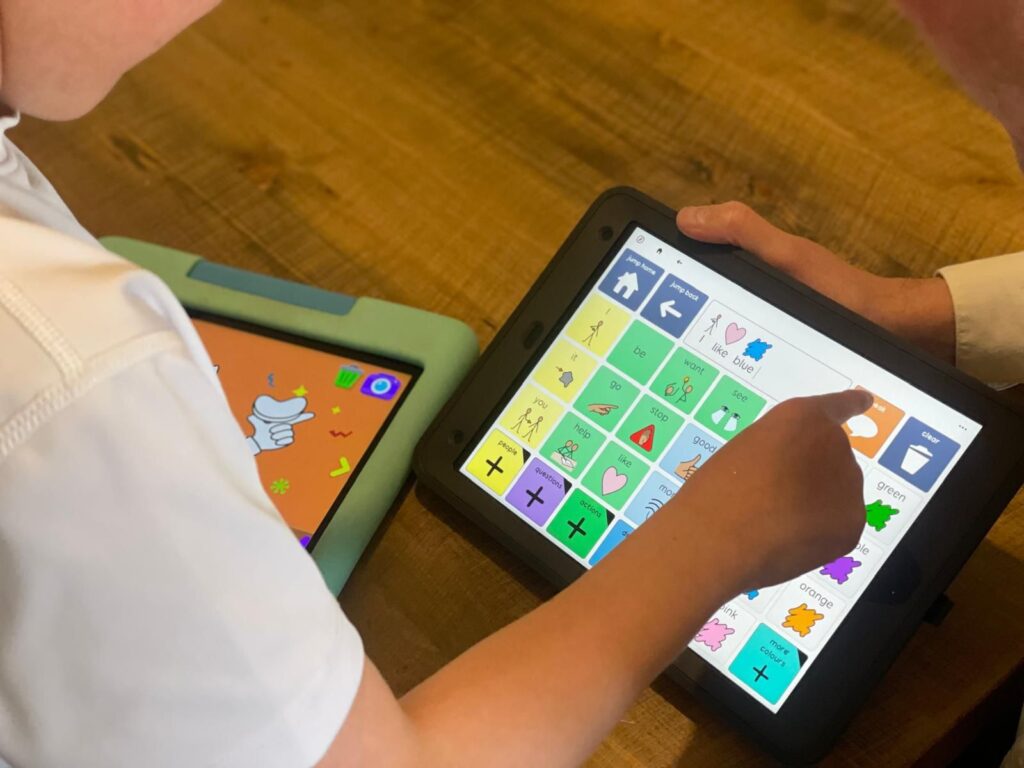AAC stands for Augmentative and Alternative Communication. That might sound like a mouthful, but at its heart, AAC is simply any way of communicating that doesn’t involve speech.
- Augmentative means adding to someone’s existing communication. For example, a child who uses some speech may also use signs or a symbol board to support understanding.
- Alternative means replacing speech altogether.
AAC isn’t just about devices or symbols. It’s about helping children connect, feel included and share who they are in a way that works for them. It can be pointing to a picture, using a tablet to speak, or signing a favourite word. However it looks, AAC is about giving every child a voice.
So, What Counts as AAC?
AAC can be grouped in different ways. Some people use the terms no-tech, low-tech, and high-tech. Others prefer person-based, paper-based, and power-based to reflect the communication methods people use and how they relate to them rather than focusing on technology. Both are valid ways to describe the different types of AAC.
Here’s a simple breakdown:
No-Tech / Person-Based AAC
- Uses the body, for example gestures, facial expressions, eye pointing, or signing systems like Makaton
- Does not require any equipment
- Always accessible and often used to support emotional regulation and early interaction
Low-Tech / Paper-Based AAC
- Includes core vocabulary boards, symbol books, now and next boards, choice cards, or written word
- No batteries or charging required
- Can be personalised to suit the environment and supports consistent, visual communication
High-Tech / Power-Based AAC
Refers to electronic devices such as:
- Tablets with AAC apps (like Grid, TD Snap, or Proloquo)
- Dedicated communication devices with symbol or keyboard-based output
- Devices accessed via touch, eye gaze, or switches
High-tech AAC includes tools with voice output, supporting more complex or independent communication. You might hear someone talk about their VOCA (Voice Output Communication Aid), or simply their ‘Talker’. These can range from advanced communication devices to simple switches that play a single recorded message.
AAC is not a linear process, and there is no hierarchy where one method is considered ‘better’ than another. It’s not about moving from signs to symbols to speech. Many AAC users mix and match, using different methods in different contexts depending on what works best in the moment — a flexible approach known as multi-modal communication.
Who Is AAC For?
AAC is for anyone who finds it difficult to use speech to communicate. This might include children and young people with:
- Cerebral palsy
- Autism
- Learning disabilities
- Developmental delays
- Genetic conditions
- Acquired brain injuries
It’s also for those who may speak some words, but not enough to meet all their communication needs — or who may find speech unreliable in certain situations.
AAC and Me: A Real-World Approach
At AAC and Me, we help children use AAC in ways that truly work for them — practical, meaningful, and part of everyday life. That might mean setting up classroom communication tools, supporting a family to build visual routines at home, or training teams to model language using a device.
We work alongside families, schools and therapists. The most successful AAC support happens when everyone is involved and consistent.
Why It Matters
With AAC, children can join in conversations, make choices, take part in learning, and build real connections. They can say yes, no, stop, I want that, I love you — and anything else they want to share.
Every child deserves the chance to be heard. AAC helps them find their voice, show who they are, and connect with the world around them — from the very beginning.
What to Do Next
If you’re just starting out with AAC, you don’t have to figure it out alone. Whether you’re a parent, carer or family member, we’re here to support you. Explore the resources on our website, reach out with questions, or talk to your child’s school or therapist about what support is already in place. And if you’re not sure where to begin, start small — every step forward is a step towards connection.


